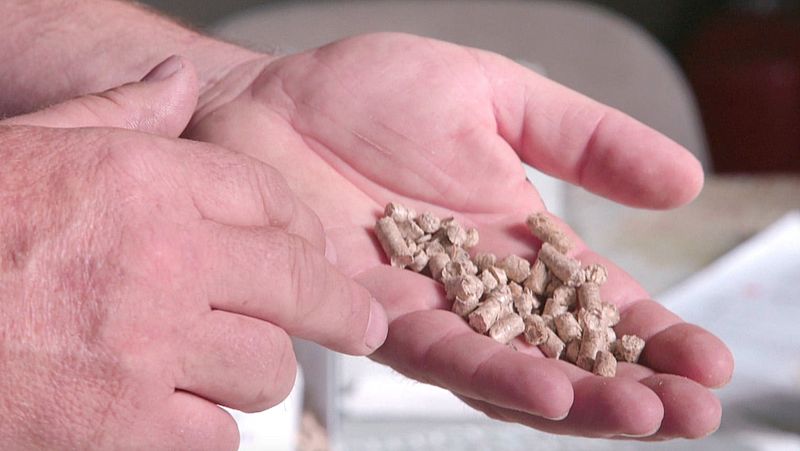Is 'elephant grass' the future for Dutch farmers? 'Could be a good way to move forward with business'
Author: Karlijn Slob
Is 'elephant grass' the future for Dutch farmers? 'Could be a good way to move forward with business'

We see small elephant grass in the Dutch landscape
Source: EenVandaag
After more than 25 years of research, we know a lot about the so-called miscanthus: a versatile crop that can contribute to solutions to the climate crisis in many different regions. However, we rarely see this 'elephant grass' in the Dutch landscape.
Miscanthus is an ancient grass of Southeast Asia and can grow up to 3 meters tall. It is a hybrid between a reed and a bamboo plant. According to Wageningen University, 'elephant grass' absorbs a large amount of CO2, contributing to a reduction in the greenhouse area.
Expensive
"Perhaps farmers will switch from potatoes to growing miscanthus in the future," says Luisa Trindade of Wageningen University. "Growing elephant grass is less labor intensive than planting potatoes".
But at the moment, it's not too far away, Trindade explains. "The only variety of miscanthus currently on the market has to be propagated by small root segments (rhizomes.) This entails the relatively high cost of planting new fields of miscanthus, which is considered by some farmers as risk."
INFORMATION
Why miscanthus is a promising crop
Miscanthus keeps the soil from becoming bare in winter, providing shelter for animals. Once harvested, miscanthus is a good raw material, such as bioplastics, concrete, and paper. It is also used in durable noise barriers or laminated members and pellets.
It is not a food crop and can therefore be grown on contaminated soil. The tree needs little attention. That means: no fertilizers. And the plants aren't susceptible to disease either, which means pesticides are really superfluous.
In addition, geese do not like tall plants. A group of peasants - united in the Miscanthus group - planted crops near Schiphol. This prevents the geese from flying near the airport's runway and then colliding with the aircraft.

elephant grass
Source: EenVandaag
Pressed elephant grass
'It's a chicken and egg problem'
Wageningen University is currently working on how to propagate miscanthus into a seed-propagated variety. After that, each carrot does not have to be planted individually, but the farmer can mechanically sow the seeds into the ground. “After that, I expect miscanthus in the Netherlands and Europe to increase,” says Trindade.
But there is another problem. It is currently unclear what miscanthus biomass can be used for. For example, maybe a farmer produces miscanthus, but has nowhere to put it.
'The farmer must be able to wait'
"For example, as in many startups, we see the 'chicken and egg problem': the industry needs biomass to be able to grow it into a product and farmers need to make sure that biomass is available. Theirs is bought by industry. Fortunately, there's progress here and farmers and industry know how to find each other."
And it makes it even more difficult for farmers. Crop farmers prefer to rotate their crops. Potatoes a year, onions or winter wheat, and beets again. "If a farmer grows potatoes, the farmer will pay back his investment in a year. With miscanthus they invest today and in just 4-5 years they will get their investment back. If looking at the long term, miscanthus certainly has many advantages, but the farmer must be able to wait."
Just a few more steps
When will we see fields full of elephant grass in the Netherlands? Trindade of Wageningen University finds it difficult to estimate. According to her, there are still some steps to be taken: "I would say that the main bottleneck at the moment is the availability of good varieties of miscanthus, with lower growing costs."
Much also depends on the farmer, although the current nitrogen crisis presents an opportunity: "It is possible that some farmers who decided to stop raising livestock have found miscanthus a good way to continue their business. "






